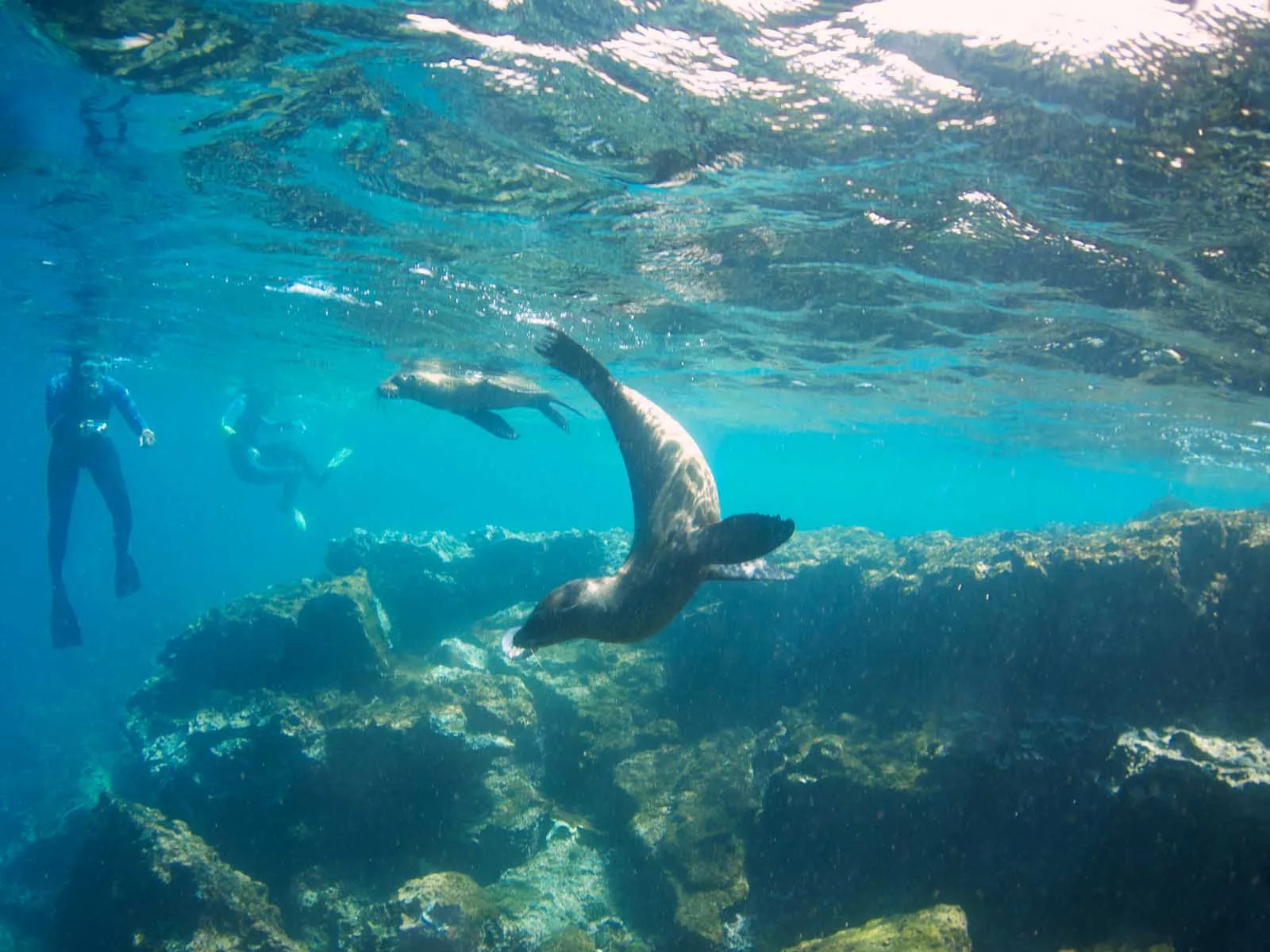
Snorkeling vs. Diving in the Galapagos Islands | Travel Blog
The pristine waters surrounding the world-renowned and magnificent Galapagos Islands are teeming with incredible marine life, making it a beacon for snorkelers and divers from across the globe. Whether you’re a thrill-seeker or an adventurer of any age, the Galapagos Islands offer the ideal setting to indulge in your favorite water sports. However, if you find yourself unfamiliar with the destination and uncertain about whether to choose snorkeling or diving, you’ve come to the right place. In the following article, we will explore the differences between snorkeling and diving in the Galapagos Islands.
Table of content
Underwater Wildlife
It is not necessary to dive to see marine wildlife in the Galapagos Islands! When snorkeling, and even just by walking around, you can find a lot of wildlife in Galapagos. However, you should know where to go. Seeing wildlife is never 100% sure. There are more factors involved when it comes to seeing wild animal species. For example, weather conditions and location are important factors. Of course, when diving, a wider variety of wildlife will be seen compared to snorkeling.
One of the primary considerations when choosing between snorkeling and diving in the Galapagos is the opportunity to witness remarkable underwater wildlife. While snorkeling allows you to observe marine life without the need for extensive equipment, the diversity of species you encounter can vary depending on several factors.
Snorkeling enthusiasts can encounter fascinating creatures while exploring the shallower waters. However, the abundance and variety of marine species may be influenced by factors such as weather conditions and location. Divers, on the other hand, have the advantage of exploring deeper waters, opening up a wider spectrum of marine life. Sharks, manta rays, sea lions, octopuses, sea turtles, and an array of colorful fish are among the enchanting creatures that divers may have the privilege of encountering.
Species of the Underwater Realm of the Galapagos Islands
Galapagos Sea Lion
Playful and inquisitive, these sea lions are known for acrobatics and interactions with divers and snorkelers.
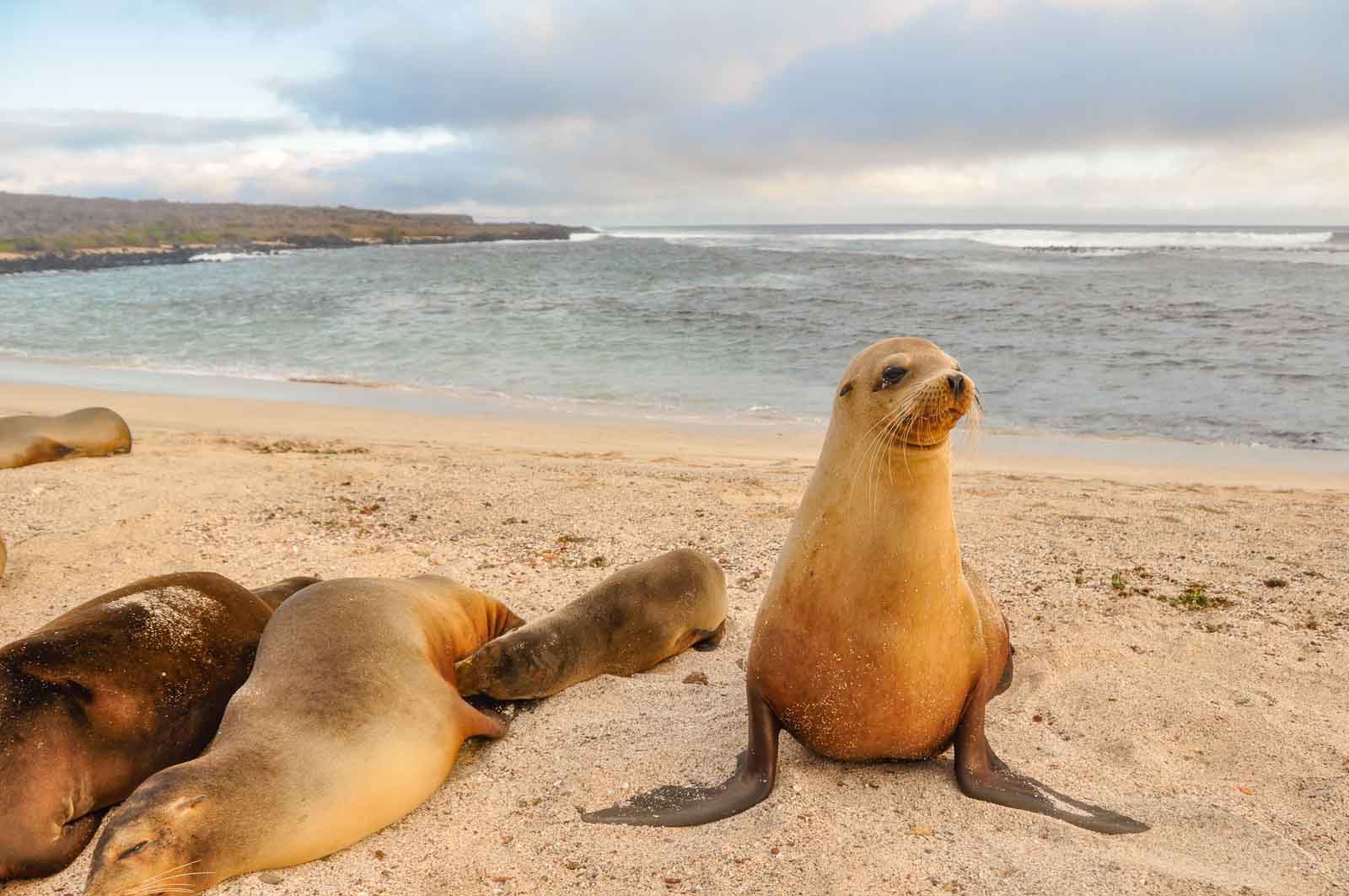
Green Sea Turtle
Graceful and ancient, often seen gliding through clear waters, feeding on seagrass.

Hammerhead Shark
Easily recognizable by unique hammer-shaped heads, providing thrilling encounters with divers. Galapagos
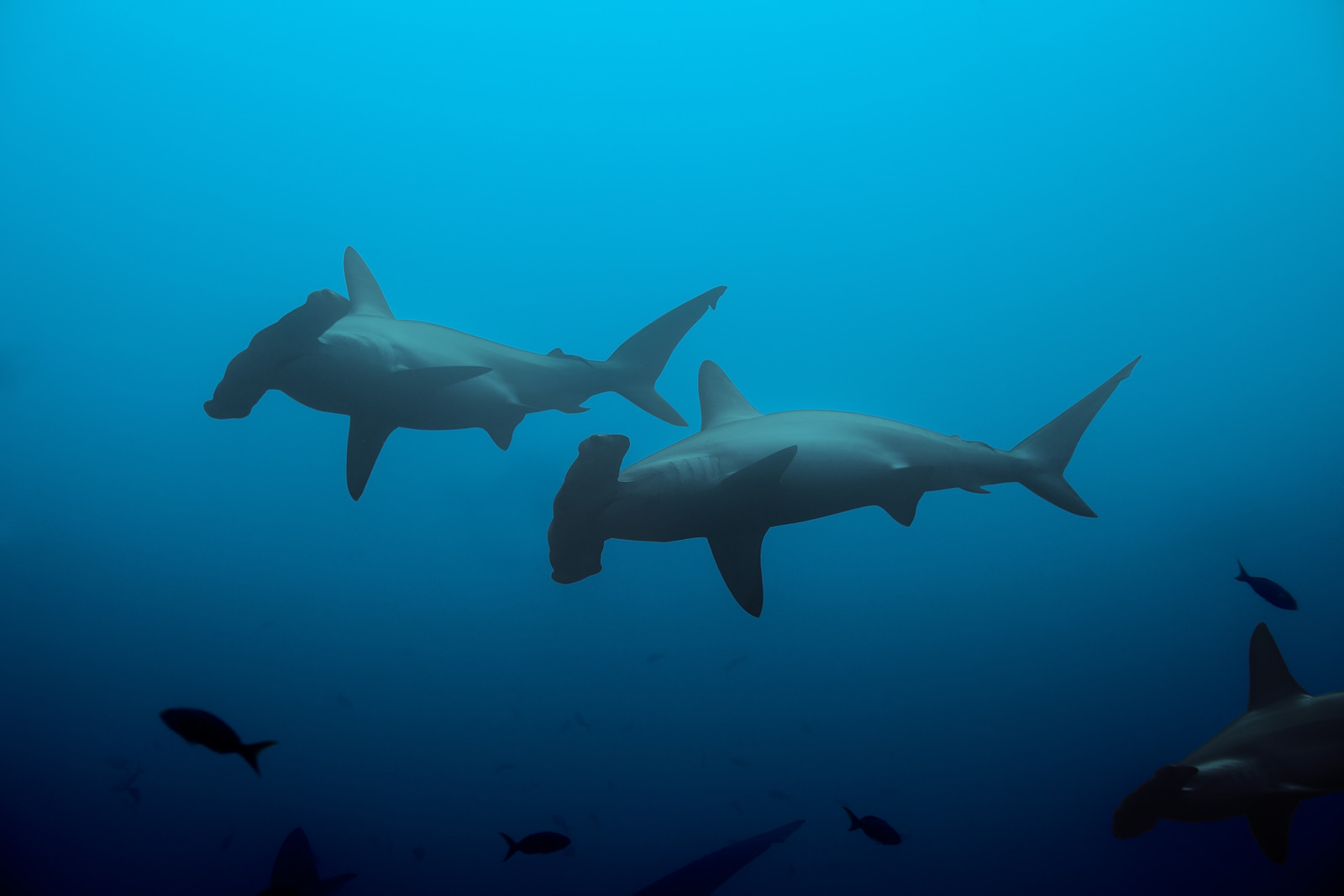
Penguin
The only penguin species north of the equator, zipping through water with remarkable speed.

Marine Iguana
Unique to Galapagos, often spotted grazing on algae beneath waves, showcasing impressive underwater foraging skills.
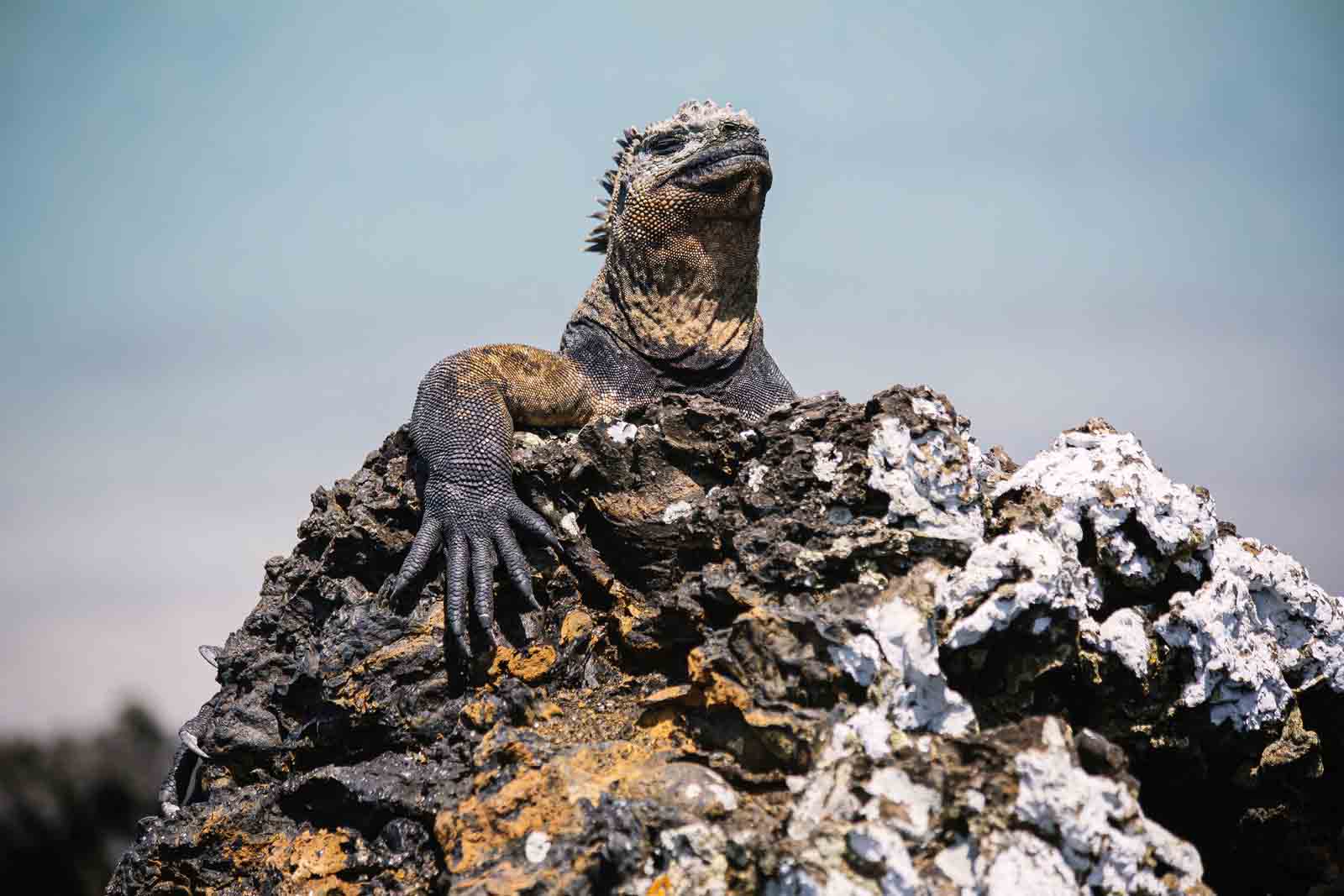
Manta Ray
With enormous wingspans, these gentle giants glide majestically through water, a mesmerizing sight.
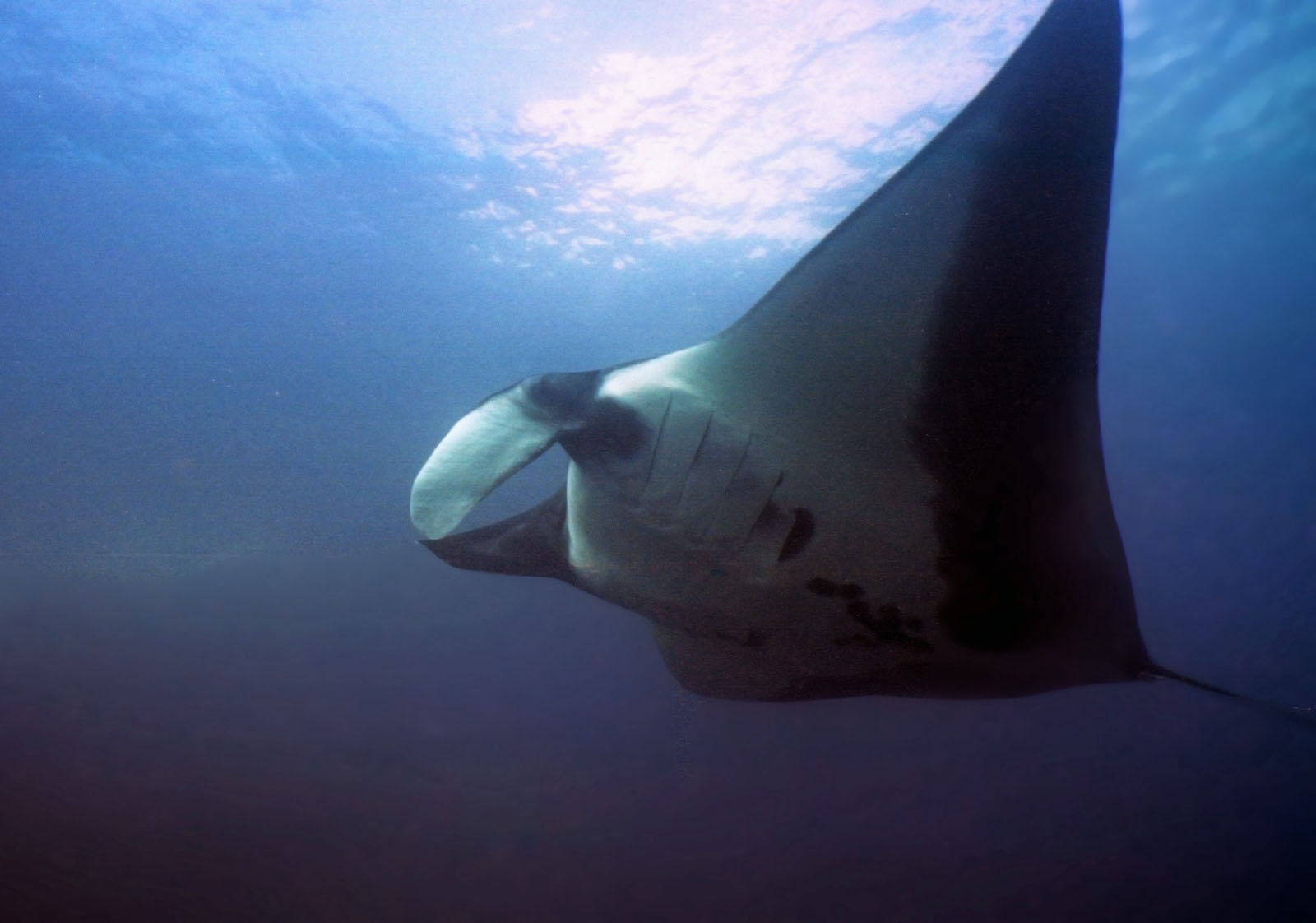
White-Tip Reef Shark
Named for distinctive white-tipped fins, commonly found resting on the ocean floor during the day.
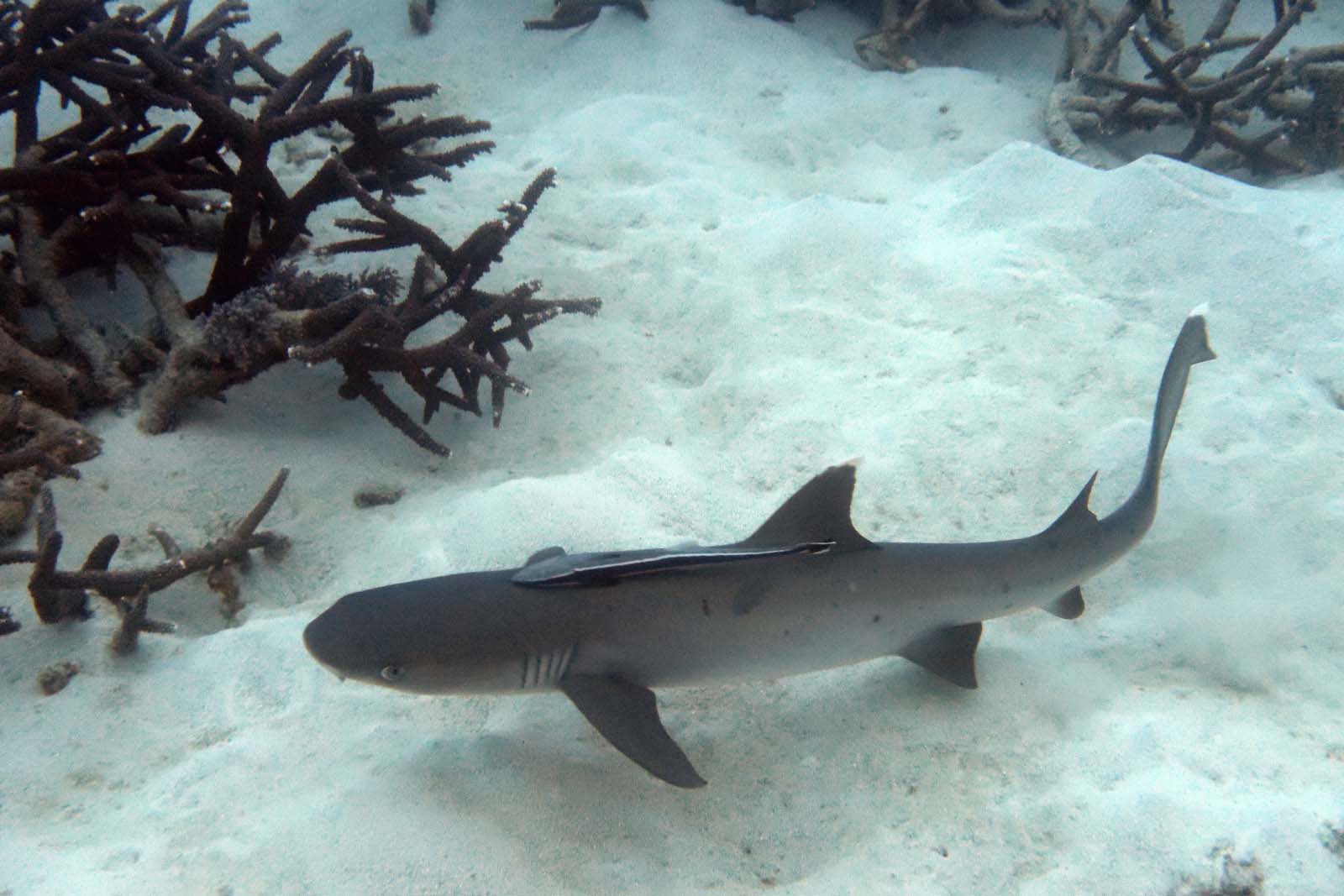
Bottlenose Dolphin
Known for intelligence and sociability, often seen riding bow waves of boats.

Spotted Eagle Ray
Recognizable by spotted backs and elegant movements, a delightful encounter.
Sally Lightfoot Crab
Brightly colored and agile, scuttling along rocky shorelines and often seen beneath the water’s surface.
Schools of Fish
Vibrant and diverse, including parrotfish, angelfish, and surgeonfish, creating a mesmerizing underwater backdrop. Giant Pacific
Octopus
Elusive and intelligent, changing color and texture as they move through the depths.
Stingrays
Besides spotted eagle rays, other species like the golden ray gracefully glide over the sandy seabed.
Whale Shark
The world’s largest fish, filter-feeding on plankton, offering awe-inspiring encounters to lucky snorkelers and divers.
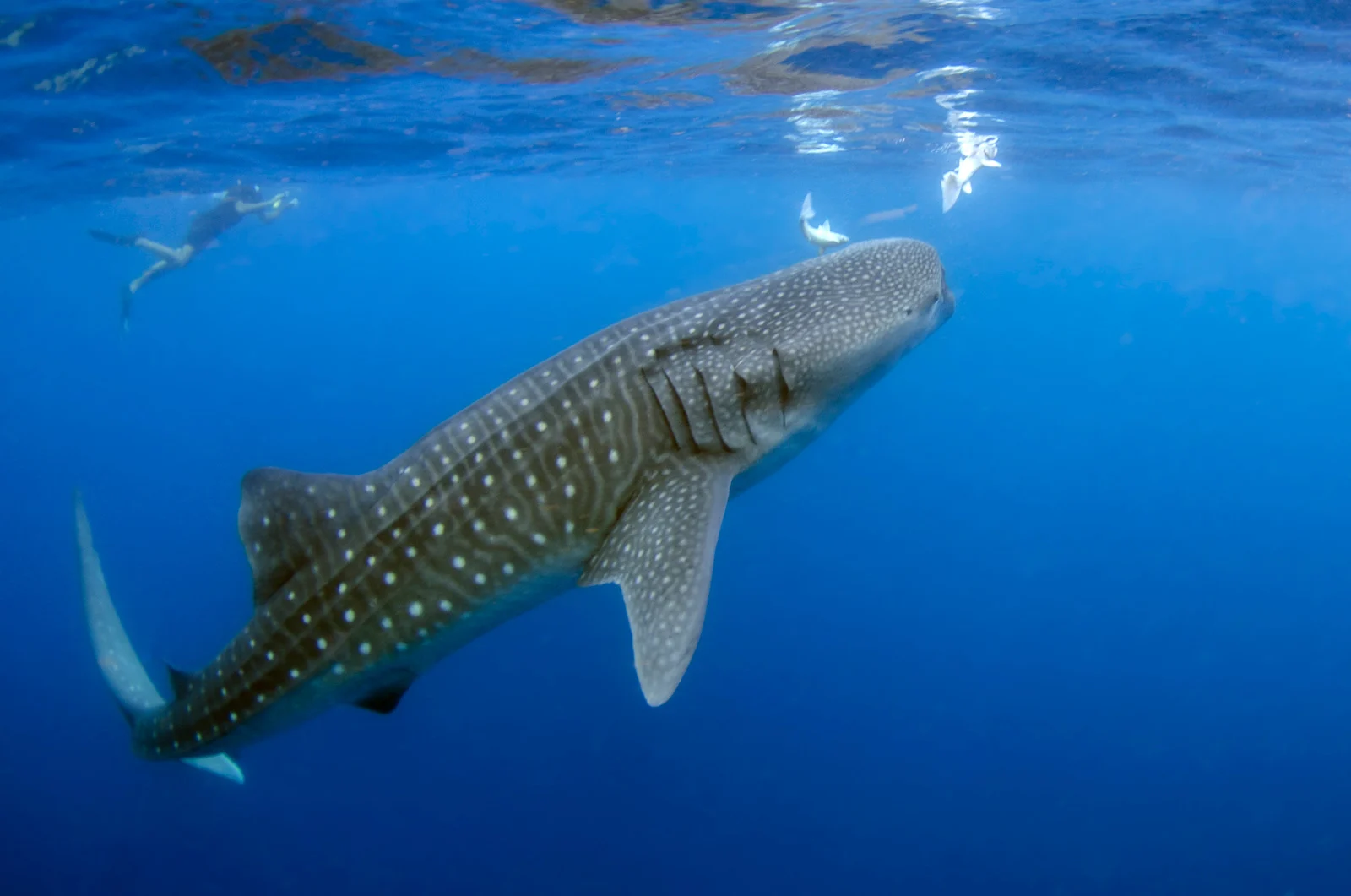
Black-Tip Shark
Recognizable by black-tipped fins, often spotted patrolling reefs, adding excitement to underwater adventures.
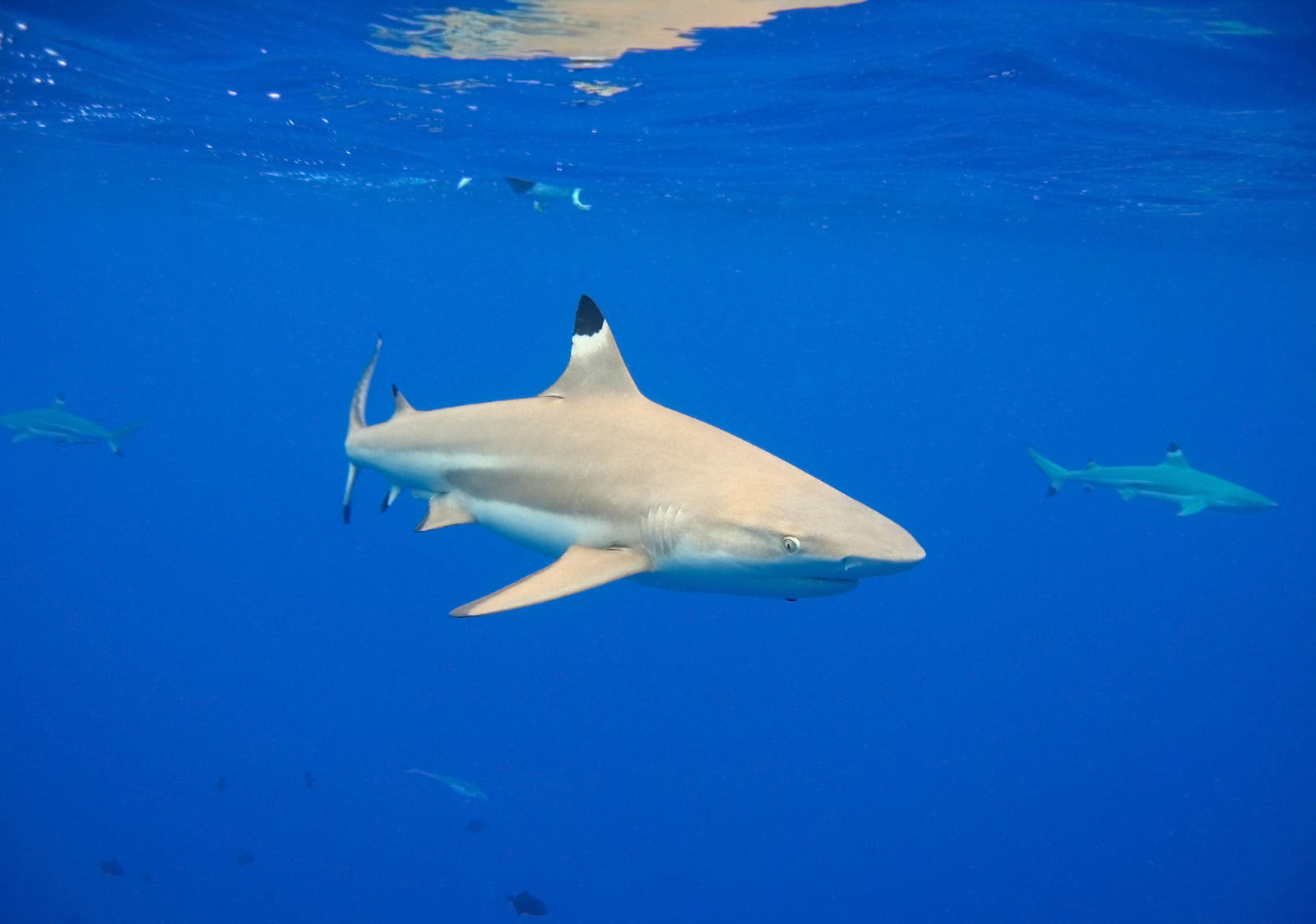
Age Restrictions
There are no age restrictions for snorkeling, making it a family-friendly pursuit. Children as young as 5 or 6 years old can partake in snorkeling, creating cherished memories during their holidays. However, basic swimming skills are necessary for snorkeling to ensure safety in the water.
Diving, on the other hand, involves stricter age requirements. To engage in a full day of diving with multiple dives in the Galapagos, individuals must possess a diving certification. The minimum age for obtaining a PADI (Professional Association of Diving Instructors) certification is 10. For those under 15, a PADI Junior Open Water certification is available, which can be upgraded to the standard PADI Open Water certification upon reaching the age of 15. Additionally, children under 13 require parental or guardian permission to register for a PADI certification course.
Price
The cost of snorkeling is generally more affordable compared to diving. This price disparity is primarily due to the specialized equipment required for diving and the need to access dive locations by boat. Diving typically entails the use of tanks, regulators, and other gear, all of which contribute to the higher cost. Additionally, diving excursions often require the presence of an instructor or dive master for safety. However, diving tours usually include gear, transportation, certified guides, and boat rides. Whether you choose diving day tours or diving cruises, your underwater experience will be extraordinary.
Snorkeling, on the other hand, can be a cost-effective activity, especially if you bring your own snorkel gear. Keep in mind, just as with diving tours, professional snorkeling gear is usually included in organized tours and itineraries. There are opportunities for free snorkeling, such as at the docks of Isabela Island, where you can observe penguins and seals frolicking around the bubbles created by your snorkel. Snorkeling tours vary in price, with options like the Bay Tour in Santa Cruz being more budget-friendly, while trips to destinations like Los Tuneles in Isabela or Santa Fe Island may be pricier. It’s important to note that the cost of a snorkeling excursion doesn’t necessarily correlate with the quantity of wildlife you’ll encounter; a bit of luck can lead to incredible wildlife sightings.
Time
The duration of your underwater experience also varies between snorkeling and diving in the Galapagos Islands. When diving, the time you spend underwater depends on factors such as the amount of air in your tank and your breathing rate, with most dives typically lasting around 40 minutes, taking these variables into account. However, it’s essential to consider the additional time required for the diving experience as a whole. This includes the time needed to don diving gear, conduct a thorough buddy check, and reach the dive site by boat or other means.
Moreover, it’s crucial to be aware of the post-dive interval, known as “surface interval” in diving terminology. After a scuba dive, it’s generally recommended to allow your body time to off-gas nitrogen absorbed during the dive. This is especially important if you plan to board a plane shortly after diving, as ascending to high altitudes too soon can pose a risk of decompression sickness. As a rule of thumb, divers should wait at least 12 to 18 hours after a single dive and longer for multiple dives or deeper dives before flying to ensure their safety and well-being.
Snorkeling, in contrast, offers a more flexible time frame. There are no constraints on the duration of your snorkeling excursion, and you can explore at your own pace. Moreover, snorkeling can be enjoyed at nearly every accessible beach you visit in the Galapagos, granting you the freedom to dip into the water whenever the opportunity arises. However, it’s important to note that the presence of marine life can vary from one location to another.
Snorkeling or Diving on the Galapagos – A Wonderful Choice Either Way. At Voyagers travel we are happy to help you book the best tour based on your preferences.
Check Our Galapagos Cruises:



